Herbs are some of the easiest edible plants to grow indoors. Typically, they don’t require a lot of watering or special care as you most people interested in growing sweet-smelling herbs want the leaves for flavor, not the seeds. Here in this article, we have a list of the top 10 best herbs to grow indoors. Who says you need a big backyard to grow fresh and delicious food?
1. Mint
Starting our list of the best herbs to grow indoors is mint. There is nothing better than taking a big old whiff of mint leaves. These sweet-smelling leaves are perfect for adding flavor to a dish or brewing into teas. They can also make your home smell amazing and are very easy to grow. You don’t even need to use dirt or make a mess. You can take cuttings from an already-grown mint plant and place them in two to three inches of water. However, mint plants don’t last forever submerged in water. Still, you can grow mint indoors in a container with soil for long-lasting use or hydroponically.
Mint plants need about 6 hours of direct light when outdoors, so they may need brighter light inside. You can use grow lights or place a container of mint by a bright window. If you use grow lights, you’ll need to have the lights on for at least 12 hours. Mint plants don’t need a lot of water. Actually, too much watering can stress out the plant, causing yellow wilting leaves and root rot. It’s best to only water once a week or when the top 1 inch of the layer feels dry to the touch.
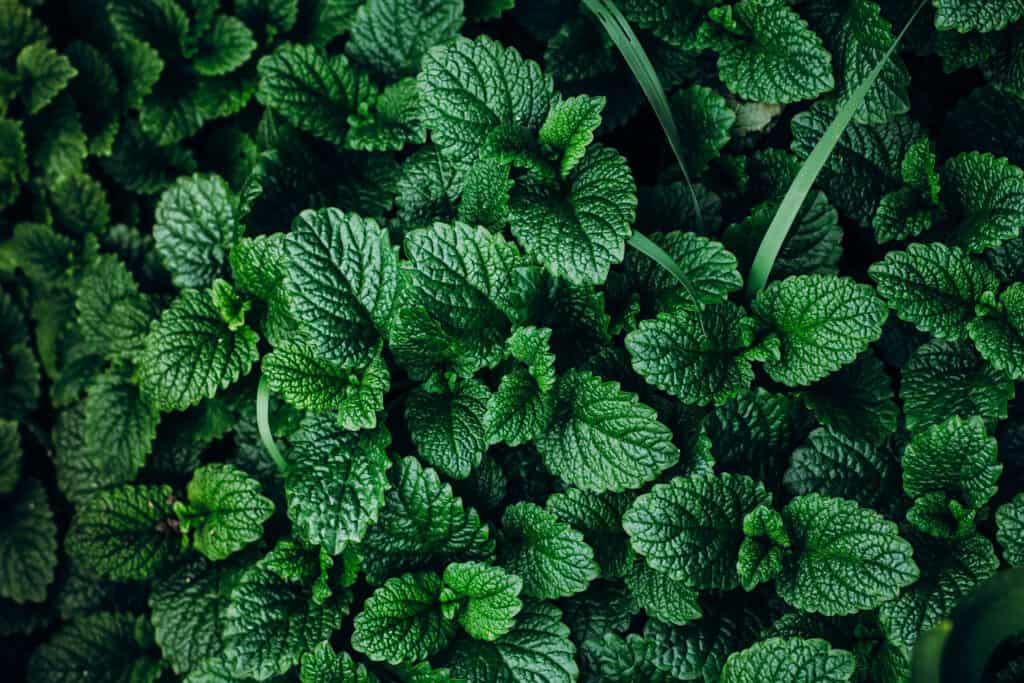
Mint is a popular indoor herb.
©AnikonaAnn/Shutterstock.com
2. Basil
Like mint, basil is one of the most popular herbs in the world. These delicious and sweet-smelling plants produce large leaves used in sauces and as toppings on dishes. You can use the leaves raw or cooked. Basil may originate from India, but this lovely plant has been cultivated for about 5,000 years throughout the world. The origin of this amazing herb is often debated and may be anywhere from the tropical regions of Central Africa to Southeast Asia.
Basil is very common in Italian cuisine. It’s a fast-growing plant that like mint, can be grown in soil, water, or a hydroponics system. There are dozens of cultivars and no two basil plants are alike. Some basil plants are even purple. Basil is easy to grow indoors as long as you choose the right container. Basil plants need oxygen. The container should have drainage holes. If you wish to continue harvesting from your basil plant, don’t let it bolt. Too much bright sunlight and temperatures of above 80°F with force the plant to flower.
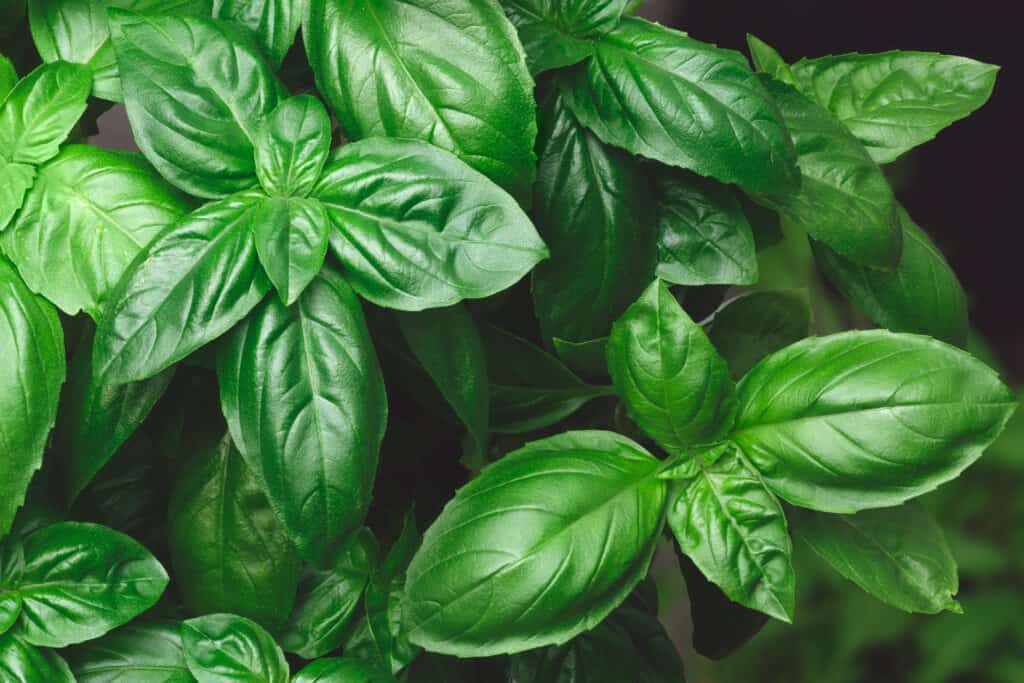
Basil bolts and produces flowers when temperatures are consistently above 80°F.
©Hortimages/Shutterstock.com
3. Thyme
Thyme isn’t as easy to grow as mint or basil, but it’s worth the effort. There are three main ways of growing thyme. The hardest way is to grow this plant from seed. The germination of thyme is difficult and uneven, but not impossible. Seeds take about 14 to 28 days to germinate. The seeds are small and require an outside temperature of at least 70°F. You can also plant thyme indoors through by taking cuttings and propagating them. The easiest way though is to buy a young thyme plant from a nursery and transplant it as needed.
Thyme is an aromatic perennial evergreen herb with many uses. Not only can you use it in your cooking, but it’s also a popular ornamental plant. Many flowering varieties produce stunning purple flowers, perfect for adding a pop of color to your home. When planting thyme, you also have a plethora of choices. There are well over 300 thyme varieties and cultivars. Some of the most common types are the common thyme, lemon thyme, lavender thyme, creeping thyme, and French thyme.

There are over 300 types of thyme varieties in the world.
©pilialoha/Shutterstock.com
4. Chives
Chives are one of the easiest plants to grow indoors. You don’t have to start from seed or use soil. They regrow quickly and are just as delicious! Chives are flowering plants in the Amaryllidaceae family. They are fast-growing plants closely related to garlic and scallion plants. Chives are often described as tasting similar to garlic. Although most people consume the leaves, chive flowers are also edible.
Chives require a lot of bright light, so this plant is a perfect herb for indoor gardeners with bright well-lit windows. However, you aren’t doomed if your window isn’t bright enough. You can use a grow light, but it’ll need to be on for longer. They also do well in hydroponics systems, although most people recommend growing in soil so the plant is compact. Chives can happily grow in clusters. The best part about this plant is that you can cut and harvest over and over again! In just two to three weeks after cutting, your chive may be ready to harvest again.
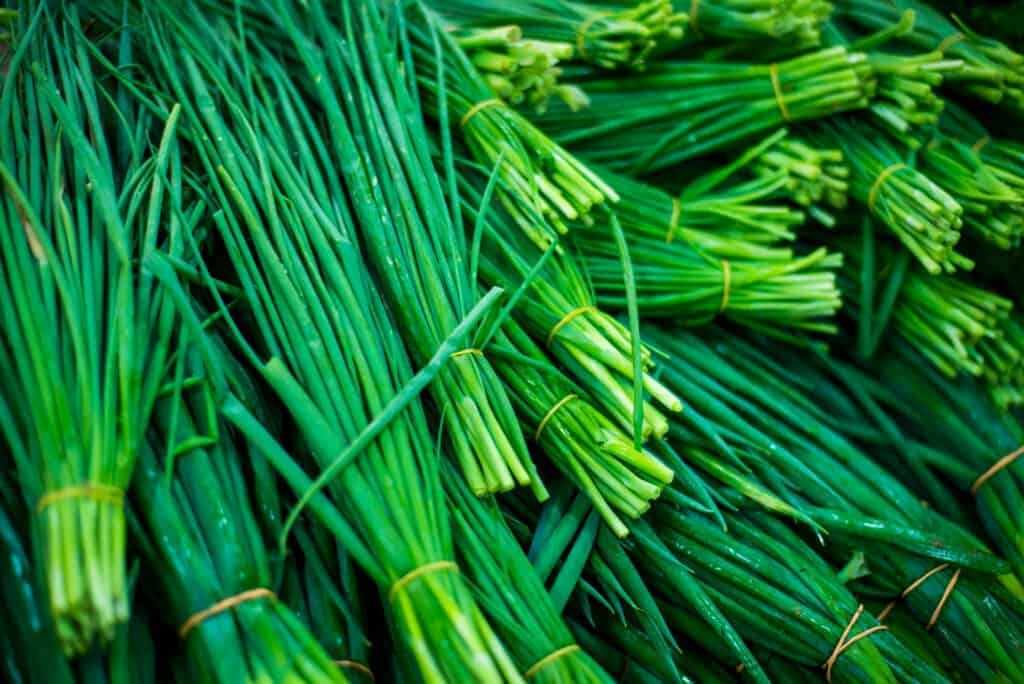
Chives are easy to grow indoors and outdoors.
©Heitor Pergher/Shutterstock.com
5. Lavender
Did you know that lavender is also a herb? Many people only categorize this plant as a beautiful fragrant flower, but lavender has medicinal and therapeutic properties. Some lavender varieties are edible and are often used in recipes to make things like ice cream, cake, bread, coffee, tea, and more.
Growing lavender indoors can be tricky, but it doesn’t have to be. First, start by choosing a dwarf variety. This way it’s compact and easier to grow indoors in small spaces. Setting up the container and growing space tends to be the most tedious part of growing lavender indoors. The container needs to be large, well-draining, and filled with slightly alkaline soil. Lavender plants also need at least 6 hours of direct bright light. If you don’t have enough, you can use a grow light and set it to turn on for a minimum of 10 hours.

Lavender grows well in containers with drainage holes.
©Kristen Prahl/Shutterstock.com
6. Parsley
The next herb on our list of the best herbs to grow indoors is parsley. This delicious and highly aromatic herb is perfect in salsas, pasta sauces, and as a garnish. Parsley can also be manufactured into an oil that is then used as a flavoring or as a scent in soaps and perfumes.
So, how can you grow parsley indoors? Parsley best grows in clusters. Instead of planting one seed in a container, spread the seeds around the top of the soil and cover it with a light layer of soil. Moisten with a spray bottle to not saturate the seeds. Parsley seeds germinate in about 14 to 28 days, so it’s a bit of a waiting game. This hardy plant is perfect for growing near a bright window or in a hydroponics system. You can start harvesting in as little as 70 days from seed.
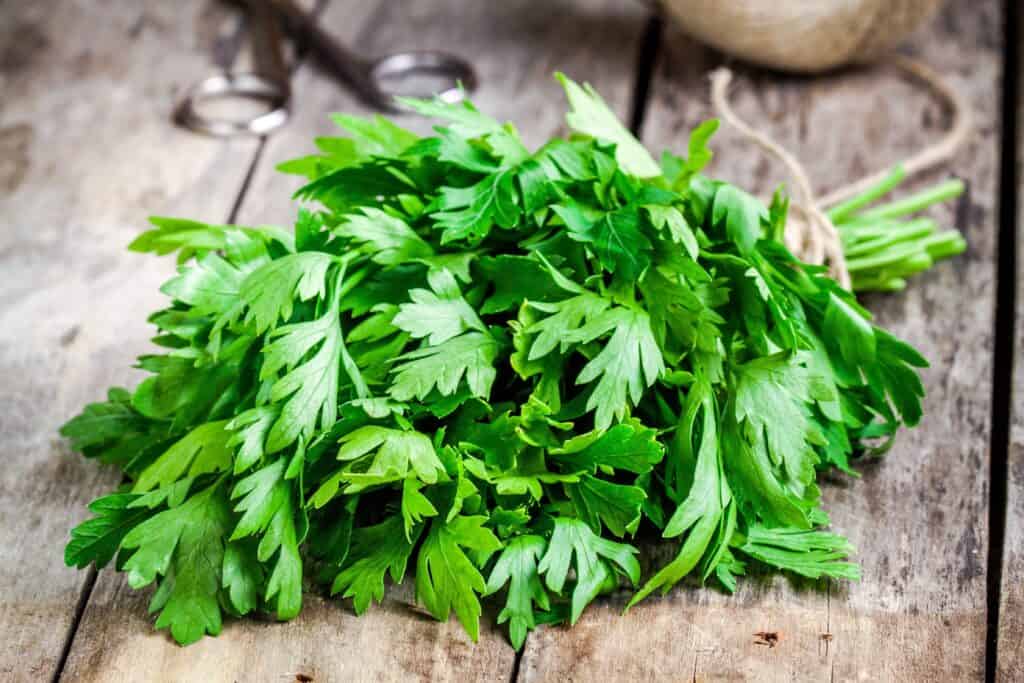
Parsley seeds take about 14 to 28 days to germinate.
©nblx/Shutterstock.com
7. Cilantro
Cilantro is extremely similar to parsley. These two delicious culinary herbs are often mistaken for each other. Cilantro though, is a bit easier to grow indoors as long as you have fresh and viable seeds. A common problem with growing cilantro from seed is faulty seeds. When choosing a seed packet, ensure that the seeds are less than two years old. The germination rate decreases with age.
Growing cilantro from seeds indoors is relatively easy. You can grow this plant in a hydroponics system, germinate the seeds in a paper towel, or sow the seeds directly into the soil in a container. Cilantro plants do best when grown in large groups. If not, they can grow too long or become leggy, falling to the sides. This also happens when cilantro plants don’t get enough light.
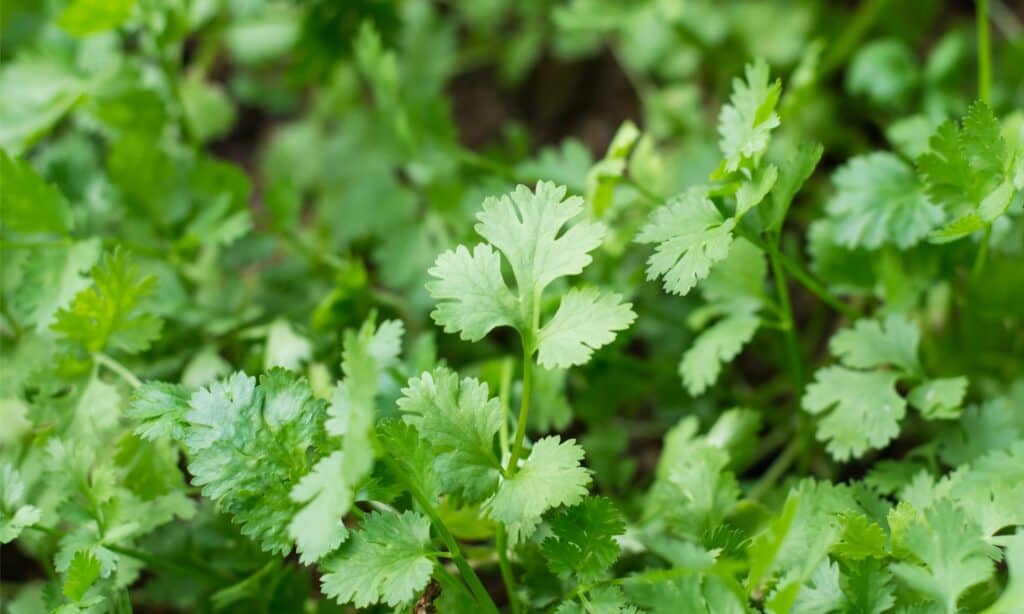
Cilantro seeds germinate in about 5 to 21 days.
©iStock.com/Tevarak
8. Sage
Did you know that you can also grow sage indoors? No more needing to run to the grocery store or specialty store for sage. Sage is a perennial herb with grayish leaves and a woody stem. They are native to the Mediterranean region but grow throughout the world. Sage is one of the easiest plants to grow in containers. It thrives in a confined space, as long as you don’t overwater it. Use well-draining soil and a container with drainage holes to prevent waterlogged soil.
Sage has many excellent uses. This plant was previously used for its medicinal properties. This lovely plant was used as a traditional medicine to relieve pain, fight inflammation, and cure dementia and diabetes. This, however, hasn’t been proven.
A-Z Animals is not a doctor or medical professional. Information in this article is simply for educational purposes, not advice. If you have any concerns, please seek a professional.
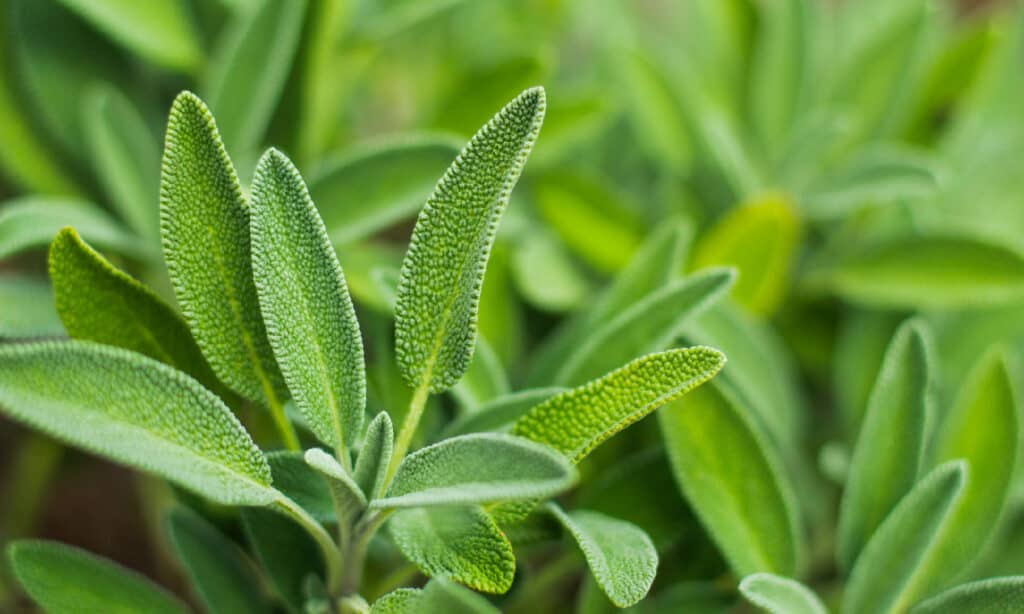
Sage has a lot of uses. Historically, it was used to treat pain and many illnesses.
©iStock.com/Bonnie McCann
9. Lemongrass
Another amazing herb on our list of the best herbs to grow indoors is lemongrass. Lemongrass is a genus of tropical plants in the Poaceae family. These lovely herbs are often used in dishes and cooking. There are hundreds of varieties and types, and it goes by many names. Some other names for lemongrass plants are citronella grass, silky heads, fever grass, and barbed wire grass.
Lemongrass is massive. In the right conditions, this plant can easily reach up to 6.5 feet tall. Lemongrass, specifically Cymbopogon nardus and Cymbopogon winterianus have excellent insect repelling properties. Although they are large plants, you can still grow them indoors, simply choose a small, but deep container. Your lemongrass plant also needs at least 6 hours of direct bright light.
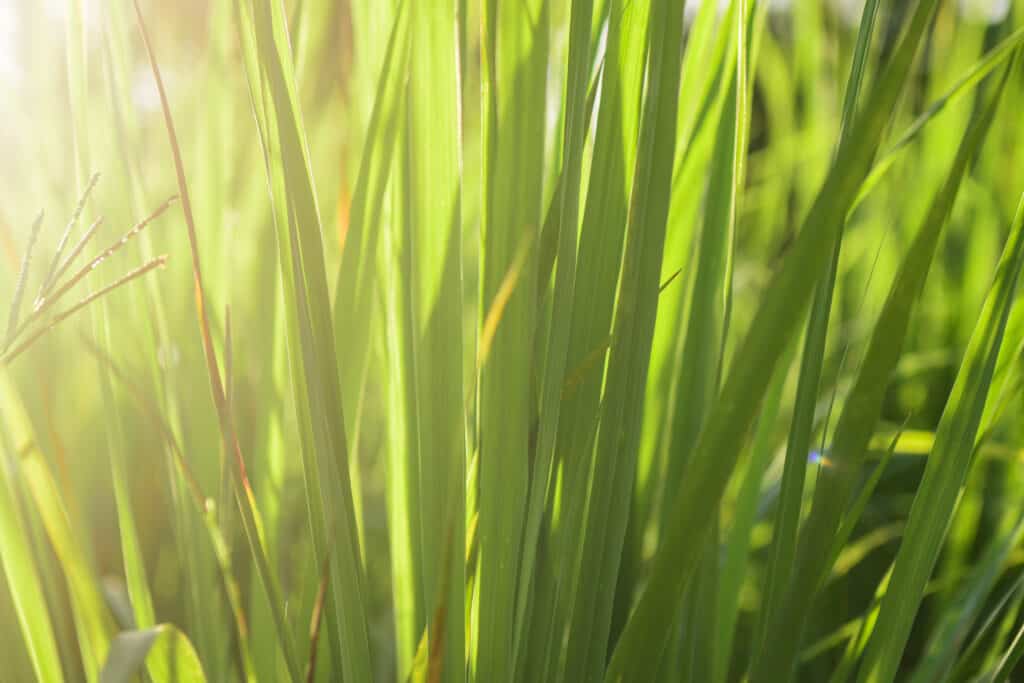
Lemongrass has a lot of uses. Some varieties have insect-repelling properties.
©iStock.com/ATP-Photographer
10. Oregano
The tenth and final best herb to grow indoors on our list is oregano. This delicious and highly aromatic plant is native to the Mediterranean region. However, it grows all over the world, like all the other herbs on this list. So, what can you use oregano for? Oregano has many uses. It’s very important in many Mediterranean dishes. Oregano is typically used in savory dishes. The leaves are often crushed up or ground into a powder and used in sauces or as a topping on pizza and salads.
Some people also use oregano for its potential medical benefits. However, according to WebMD, there is little to no conclusive evidence that oregano has many health benefits. Still, it’s used to treat coughs and headaches. Regardless of why you want to use oregano, you’ll be happy to know that this plant thrives indoors. Oregano is drought-resistant and generally hard to kill. Instead, the plant spreads quickly and is known to spread and take over gardens. So, one plant can easily fill up a large container with time.
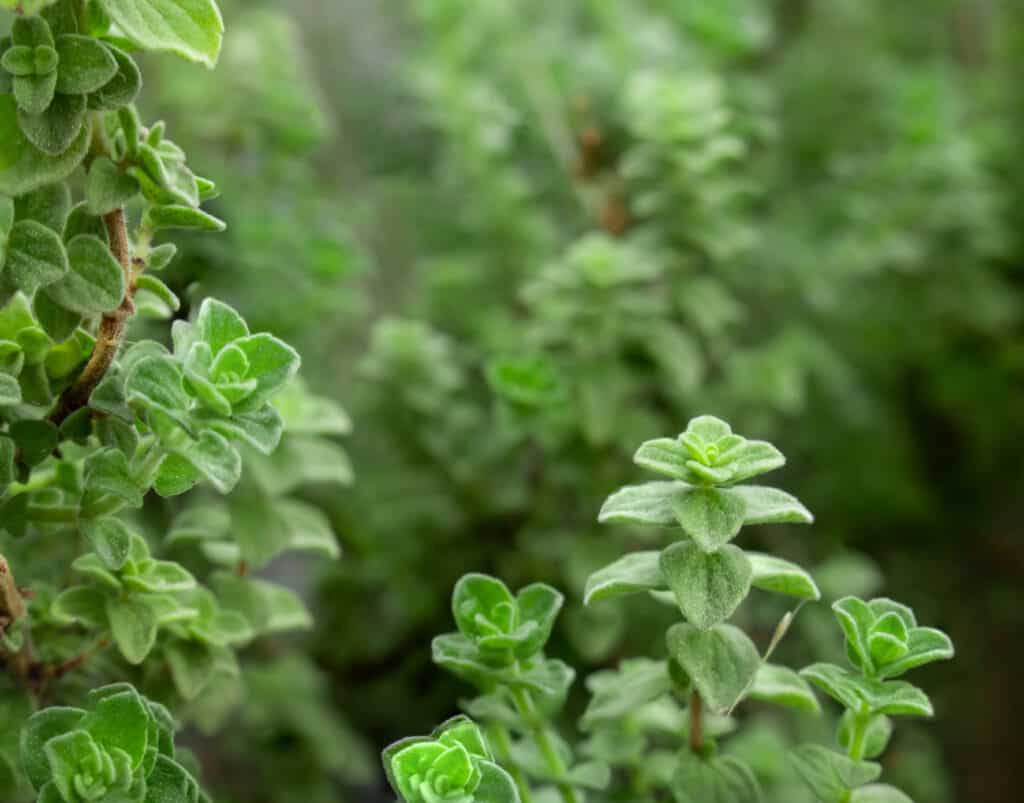
Oregano plants spread quickly. In a garden, they can take over!
©Artem Kontratiev/Shutterstock.com
Thank you for reading! Have some feedback for us? Contact the AZ Animals editorial team.








